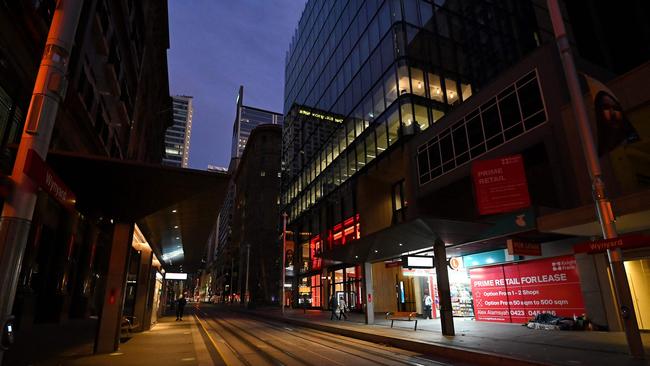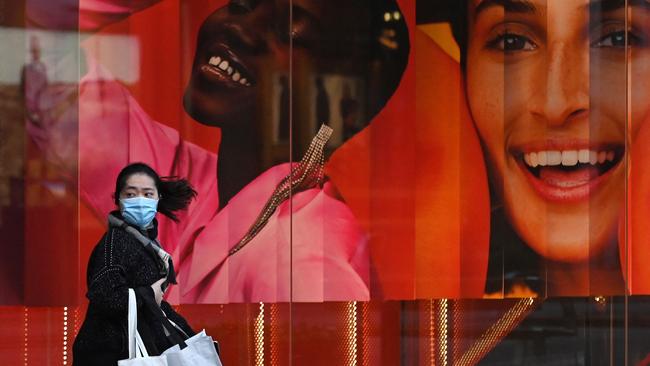
We haven’t just been through a June quarter when the economy last year plunged a totally unprecedented 7 per cent because the entire country was mandatorily locked down by government in an also totally unprecedented way.
The plunge in the economy would have been much worse but for all the counter measures – principally JobKeeper, followed by the Reserve Bank cutting its interest rate to zero and printing money, and a host of other measures putting money in individual and business pockets.
In an overall sense it added up to something also completely unprecedented – a government ordering the economy to close down on the one hand and having massive stimulus on the other. As I characterised it: slamming on the brakes and gunning the accelerator at the same time.
Then came the September quarter and Victoria alone was in lockdown. The rest of Australia was opening up and so the national economy made back just on half of what had been lost – it grew 3.5 percent. It would have been closer to 5 per cent if Victoria had joined in.
But when Victoria did join the rest of Australia, in the December quarter, it acted like a super-charger and the national economy recovered nearly all the remaining ground lost in that March quarter thumping.

Then in this latest March quarter we grew by another 1.8 per cent – somewhat slower but still strong in conventional terms, and especially as JobKeeper had ended at the end of March.
It meant the economy was now clearly bigger than the peak reached in the December 2019 quarter just before the virus flew out of Wuhan and into our airports, and pretty much every airport in the world.
We don’t yet have the GDP figures for this latest June quarter, but it will have recorded further – relatively modest – growth, with that ending of JobKeeper.
So now, in an eerily similar replay of last year, we’ve kicked off the September quarter, with not one- quarter of the national economy, Victoria, locked down, but this time around half, with most but not all of NSW as well.
Obviously, the – unknown and at this point unknowable question (it’s one of the late Donald Rumsfeld’s ‘known unknowns’) - is how long the lockdowns last.
If they went all the way or most of the way through the quarter, they would knock at least 4 per cent off national growth; job losses and business destruction would be devastating.
The pain would clearly and significantly spread to the rest of Australia - take obviously Queensland and tourism.
The hopeful news is that we are better placed to handle the virus this year – thanks to the combination of contact tracing and the level of vaccination.
The counter negative news, in straight economic terms, is that this year there is dramatically less stimulus.
Yes, over the space of last week we have moved from a JobKeeper 2.0 that didn’t put any money in workers pockets in (June) locked down Victoria for the first two weeks; through JobKeeper 2.1 which also didn’t but promised to pay them more in NSW in an extended lockdown; to (finally?) JobKeeper 2.2 which pays that higher rate from day one.
It’s still less than the (very generous) $750 a week paid to both full and part time workers under the original JobKeeper 1.0. It’s now $600/$375.
The other big difference between this September’s JobKeeper 2.2 and the original JobKeeper 1.0 is that JK 2.2 is not being paid to workers in other states.
Last year JK 1.0 kept being paid in all states through the September quarter even though they weren’t locked down and for most SMEs in those states it operated like the taxpayers paying their payrolls.
In 2020 there were other federal payments directly to businesses and especially SMEs that kept flowing also through the September quarter. They’re not operating this year, at least not yet.
At a macro level, all that taxpayer spending last year was a big boost to the economy, meaning that by the end of the year we had made all almost all the ground lost in the national lockdown.
At the micro, individual business, level, the JK 1.0 payments to states not in lockdown also made a lot of people rich; which also delivered a ‘trickle down’ boost to the overall economy.
So, the economic outlook all turns on the length of these lockdowns. If they end quickly we will bounce back quickly, as Victoria showed, belatedly, last year.
If they go right through the quarter it is going to be a bleak welcome to spring – particularly in the lockdown states but the others as well.




With Victoria and Greater Sydney in lockdown, in economic terms the rest of the year is shaping up as a replay of 2020 – but with one huge difference.